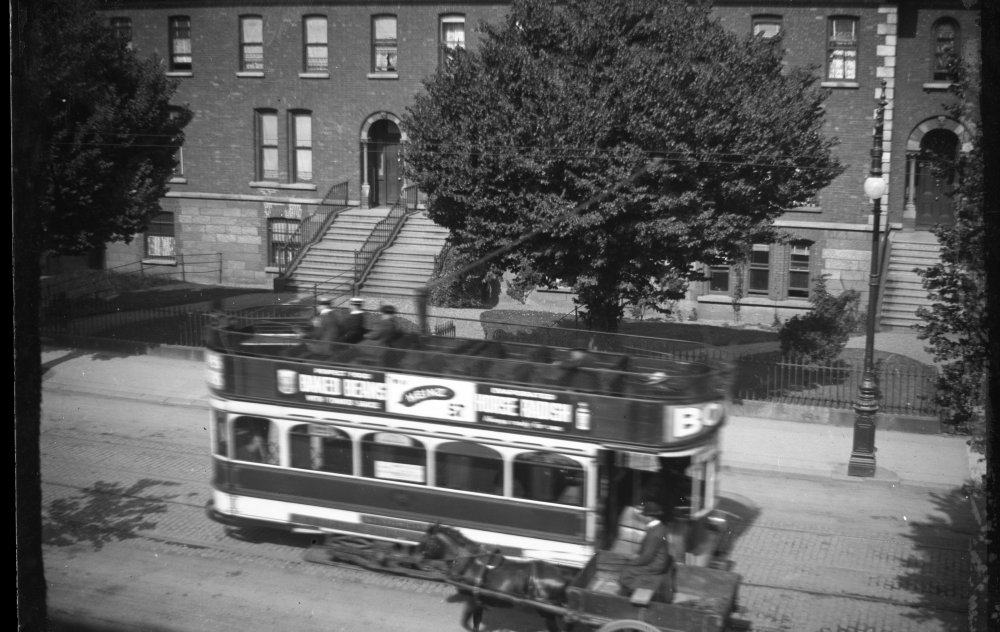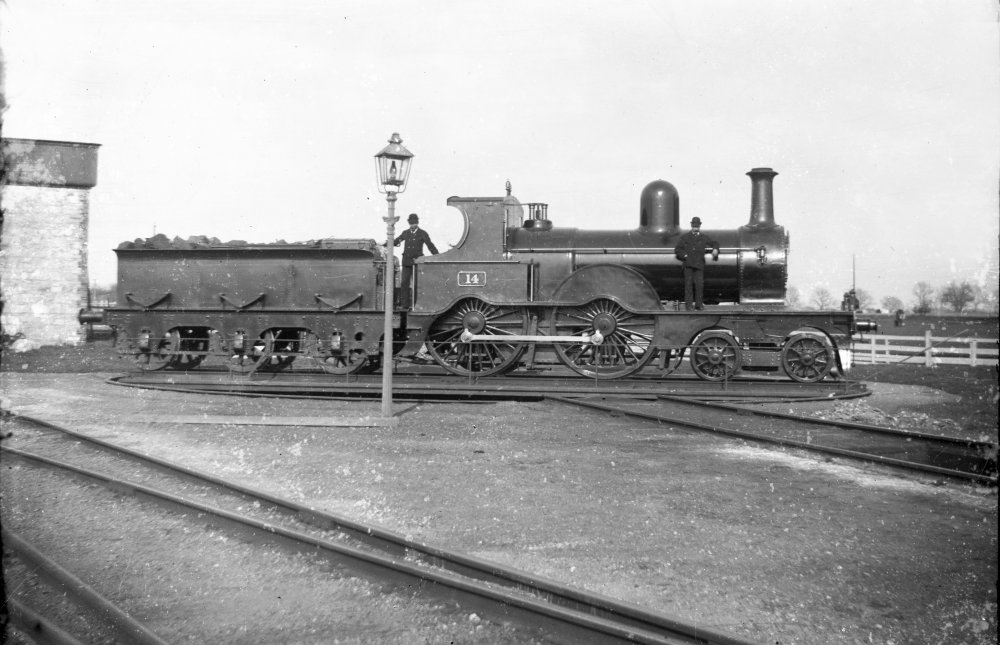-
Posts
15,923 -
Joined
-
Last visited
-
Days Won
394
Content Type
Profiles
Forums
Events
Gallery
Blogs
Community Map
Everything posted by jhb171achill
-
Indeed - and on the silver ones, the light green numerals often wore off entirely, leaving less weathered silver paint underneath, which on a very dirty engine gave the impression of a light-coloured style of numeral. Similarly, the light green paint on the steel "snails" attached to the sides of "A"'s often wore, leaving bare metal - if it didn't do that, it faded. There's actually a whole topic around what weathering DID to locos and carriages - wagon paint rusting up on the metal bits, and bleaching on the timber bits....GNR loco domes (and Donegal ones) appearing to be black instead of blue or red (same with green CIE locos), carriage roofs painted pale "lead" grey turning black, and so on. Often, those who did not witness such things will get the impression that the GNR had fifty shades of blue, CIE had fifty shades of green and the CDR had maybe forty shades of red. Equally, and more recently, that in the 1960s there were fifty shades of CIE loco and coach "tan" / "golden brown" / "orange". In almost all cases, it is fading and weathering, not different paint - plus differing levels of deterioration on old colour slides and prints. Railway companies were an early example of taking a pride in their uniform corporate image and went to great lengths to match paints accurately. A friend of jhbSenior's, who died about ten years ago, was the "paint chemist" in Dundalk Works, employed for this purpose.
-
Around 1964/5, you could have had SIX variants together - just about. The silver livery was first in 1955. By 1958 they were being repainted green (lighter; the very few dark variants were a little later). However, some remained silver - albeit so utterly filthy you really could barely tell what colour they were - until c.1965; then going directly to black, skipping the green. So, first of all, you've a few silver alongside mostly green 1958-c.64/5. A couple get the dark green about 1960-ish - I'd have to check. Black appears in late 1962, with full height tan sides; not wearing well, and all-black variant appears during 1963 - and some with yellow panels c.1963/4. So, if you stick the timescale of your layout to be preserved in aspic in 1964, let's say; you have: 1. Silver - very badly decomposed and about to be repainted 2. Green - lighter 3. Green - darker (just a couple of them) 4. Black with high tan sides 5. Black 6. Black with yellow end panels. By the late 1960s, the three black variants are the only show in town. Once re-engined, low tan side bands were the norm but a few had high tan sides, including preserved A39. "Supertrain" livery in 1972 became standard for all until 1987, when the "tippex" lines were gradually added. Who said the 1990s were interesting, again?
-
As mentioned there were two shades, though the vast majority only had the lighter shade. It wouldn’t have been quite “appley”, nor, of course mint; the samples seen here look ok to me, I have to say… As for the black……. The green one will need a rolled up Independent in the cab with a headline about President Kennedy being shot!
-
That’s a truly outstanding job, well done!
-
Walker Diesel Class F - ECMbuild in 4mm for OOn3
jhb171achill replied to murrayec's topic in Irish Models
Interesting, your views on the airbrush. While dirt in real life IS effectively “sprayed” on rather than brushed, I’ve often seen models with what I presume to be airbrushed weathering which is unrealistically even.- 136 replies
-
- class f
- west clare
-
(and 1 more)
Tagged with:
-
Yes, that’s similar to what I had in mind!
-
I’d love one with endless turf bog going into the distance!
-
Looking on the websites of model railway suppliers, the same dozen or so variations of backscenes pop up on all of them. I'm looking for something vaguely west-Corkish, or Kerry-like. Maybe I'm being too pernickety, but none of those advertised seem to be ideal - though, in fairness, most would DO. I would be interested in getting something more local done, perhaps with real views of real mountains in the background, down there in the south-west. I wonder has anyone ever had any thoughts about how best to go about converting local views into credible backscene papers?
-
South Dublin Model Railway exhibition 2021 - Cancelled
jhb171achill replied to DartStation's topic in What's On?
Sad but inevitable. My guess - and I hate to say it - is that there will be another lockdown. -
Yes, Shannon Heritage are withdrawing from managing quite a number of tourist attractions...... not just around Dublin, but also in the west - Bunratty Castle & Folk Park, for example. Since Clare Co. Council are directly taking THAT over, the likelihood is that Fingal Co Council will take over Malahide Castle, the Model Railway Museum, Newbridge House in Donabate and so on - I would guess. Fingal CoCo are the owners. But as a local authority, it is better for them to sub-contract the day-to-day running of anything they can; but museums across the board rarely if ever cover their costs, let alone make a surplus, so as a general rule it isn't easy to find groups to operate such things. Voluntary society, anyone?
-
IRM A Class Sales Leader Board - Which Ones Are About To Sell Out??
jhb171achill replied to Warbonnet's topic in News
1969 to some time just after 1972, when it was repainted into "Supertrain" livery. Not long. -
For our tram fans; from 35 Northumberland Road, Dublin, c. 1915: The fella going past in the cart is the "Deliveroo" man with the pizza for lunch.....
-
Hopefully! Good thinking.......
-
So as of now, anything I get in Brexitland goes to a relative in Wales, who will accidentally bring it over now and again……
-
I believe they were no stranger to the 70s on the Cork line.
-
To muddy the waters further, a friend of mine IN Britain now finds extra charges between the U.K. and AUSTRALIA!
-
PERFECT for a RTR! Travelled widely, versatile, and long lived. Once the "A" class are all sold............?
-
That is an EXCEPTIONAL bit of micro-engineering! Very impressive!
-
VERY well spotted! I'd say it's certainly Tullow. There's one more view: The lamp is visible in the IRRS shot. It is certainly Tullow.
-
Tullow’s top of the list, then. I found one more view which I’ll post later but the rest are old family photos. Must start soon on the “ordinary” negs which are 1935 onwards. Indeed they were! Inchicore’s heyday….
.png.c363cdf5c3fb7955cd92a55eb6dbbae0.png)





